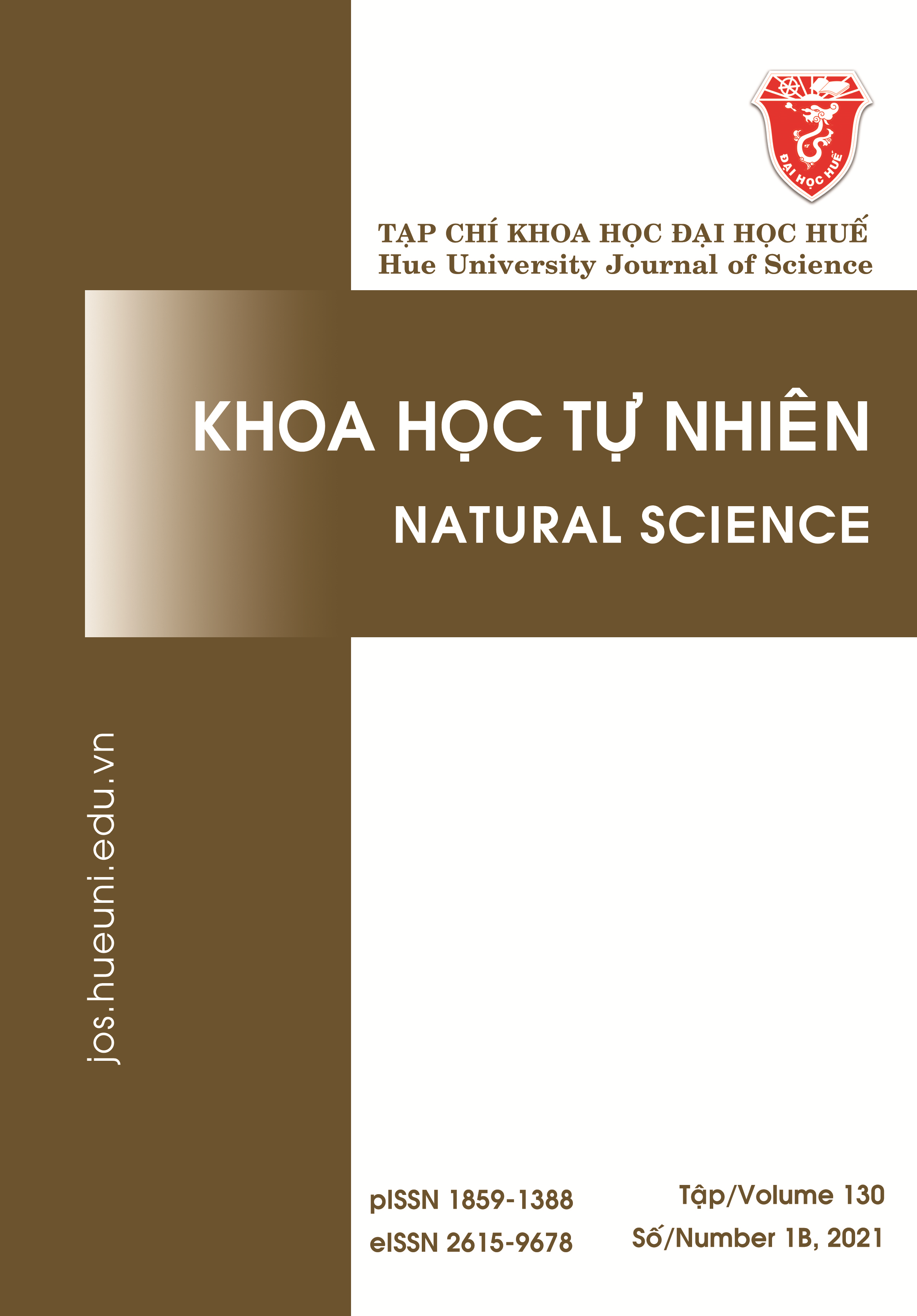Abstract
The cultivation of netted melon is becoming popular in vegetable farms in Vietnam. The netted melon cultivar ‘Inthanon RZ’ was evaluated for its growth ability, yield, fruit quality, and economic efficiency when treated with densities of 38,000 and 33,000 plants/ha and four foliar fertilizer sprays: Biotic foliar AMINO ACID 1000, NPK NUTRI-GOLD 29-10-10 + 3 MgO + TE, NPK HAI-CHYODA 14-17-12 + 12 S, and NPK DAU TRAU 30-10-5 + TE. The experiment was conducted in a plastic house at the Biotechnology Institute of Hue University from January to April 2019. The experiment area was 72 m2. The results indicate that plants have a similar growth time under the cultivation conditions. The plants grown with the density of 38,000 plants/ha exhibit a higher leaf area index. The actual yield ranges from 34.00 tons/ha (AMINO ACID 1000; 33,000 plants/ha) to 46.22 tons/ha (NPK HAI-CHYODA 14-17-12 + 12 S; 38,000 plants/ha). Applying NPK HAI-CHYODA 14-17-12 + 12S or NPK DAU TRAU results in the Brix grade higher than 12.0 for both plant densities. Powdery mildew is the most frequently observed in the treatments with NPK DAU TRAU. The yield and profit obtained from trading the melon are highest for the density of 38,000 plants/ha with fertilizer NPK HAI-CHYODA 14-17-12 + 12S.
References
- Adam CF. Nutritive value of American foods in common units. US Department of Agriculture. Agric Handbook. 1975;425:29.
- Hai TTHH, Linh TN, Thanh ND. Growth, yield and quality of melon (Cucumis melo L.) F1 hybrid varieties cultivated under plastic-house conditions in spring-summer 2018 in Thua Thien Hue. Hue University Journal of Science: Agriculture and Rural Development. 2019;128(3A):57-66.
- Wu LL, Deng Z, Cao L, Meng L. Effect of plant density on yield and quality of perilla sprouts. Scientific Reports. 2020;10:9937.
- Oanh LTK, Van DT, Hanh NT, Ha TD. Effect of plant density on growth yield of Korea melon cultivar ‘Geum Je’ Korea in Thai Nguyen province. Journal of Agriculture and Rural Development. 2019;2:15-21.
- STINFO. A report on analysis of trend technology: Planting netted melon using high technology. Center for Statistics and Science and Technology Information. 2014;8:23-27.
- Rajvanshi L, Bishnoi SP, Yadav SM. Effect of seed soaking and foliar spray with carbonsulfat on root-knot Nematode, meloidogyne incognita infecting round melon. Indian Journal of Nematology. 2008;38(2):186-188.
- Lester GE, John LJ, Gordon R. Supplemental foliar potassium application during muskmelon fruit development can improve fruit quality, ascorbic acid, and beta-carotene contents. Journal America Society Horticulture Science. 2015; 130(4):649-653.
- Ba TT, Trang TTT, Thuy VTB. Comparison of the growth, yield and quality of 11 melon varieties in net house, Spring–summer season 2007. Can Tho University Journal of science. 2009;10(2):238-243.
- Marios CK, Daniel LL, Giuseppe C, Youssef R. Watermelon and melon fruit quality: The genotypic and agro-environmental factors implicated. Scientia Horticulturae. 2018;234:393-408.
- Venkatesan K, Reddy BM, Senthil N. Evaluation of Muskmelon (Cucumis melo L.) genotypes for growth. yield and quality traits. Electronic Journal of Plant Breeding. 2016;7(2):443-447.
- Preciado-Rangel P; Salas-Perez L, Gallegos-robles MA, Ruiz-Espinoza FH, Ayala-Garay AV, Fortis-Hernandez M, et al. Increasing doses of potassium increases yield and quality of muskmelon fruits under greenhouse. Horticultura Brasileira. 2018;36;184-188.

This work is licensed under a Creative Commons Attribution-ShareAlike 4.0 International License.
Copyright (c) 2021 Array





